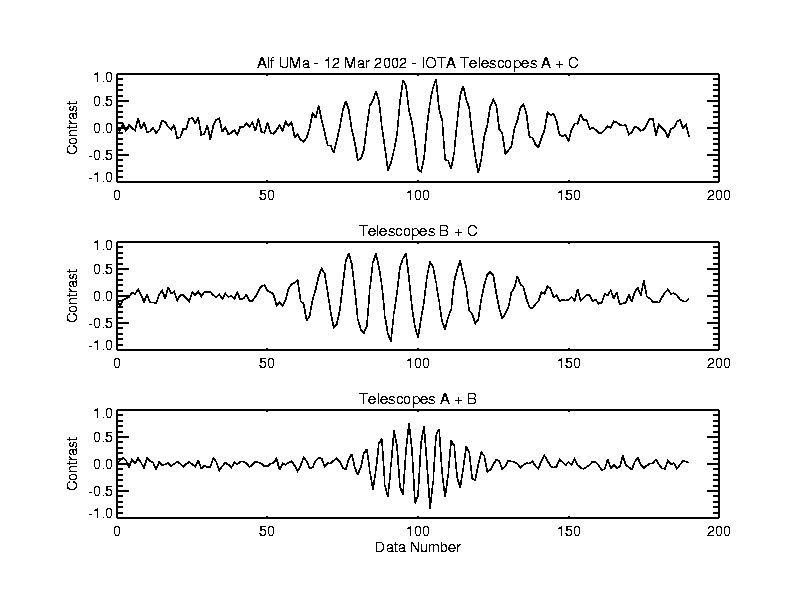
Improved Three-Telescope Measurements at IOTA (March 2002)
After our initial demonstration data (see news of February 2002 below),
the quality of our raw three-telescope data has been much improved
thanks to the efforts of John Monnier and Ettore Pedretti of the IOTA
team to better understand the polarization properties of the IONIC beam
combiner. Shown below are interferograms corresponding to each
telescope pair obtained on the star Alf UMa (HD 95689, V=1.8,
H=-0.6). It can be seen that the signal-to-noise ratio on this bright
star is very high, and that the contrast in all three fringes is also
very high (compare with our very first data below, particularly on the
A+B fringe).

Observing has continued since our first fringes, with the dual goals
of understanding all aspects of our instrumental performance and
obtaining first scientific results. Below are shown plots of
calibrated visibility amplitudes (top plot, for all three simultaneous
baselines) and closure phases (bottom plot, for the triangle of three
telescopes) prepared by John Monnier, which further illustrate our
ability to measure and calibrate these quantities with our new
setup. The data is for the well known binary Capella (HD 34029,
V=0.08, H=-1.8) and show the distinctive variation and phase jump
expected for a binary source. Comparison with model calculations based
on the well known orbit of this binary (not shown in the plots below)
indicate good agreement with our measurements.
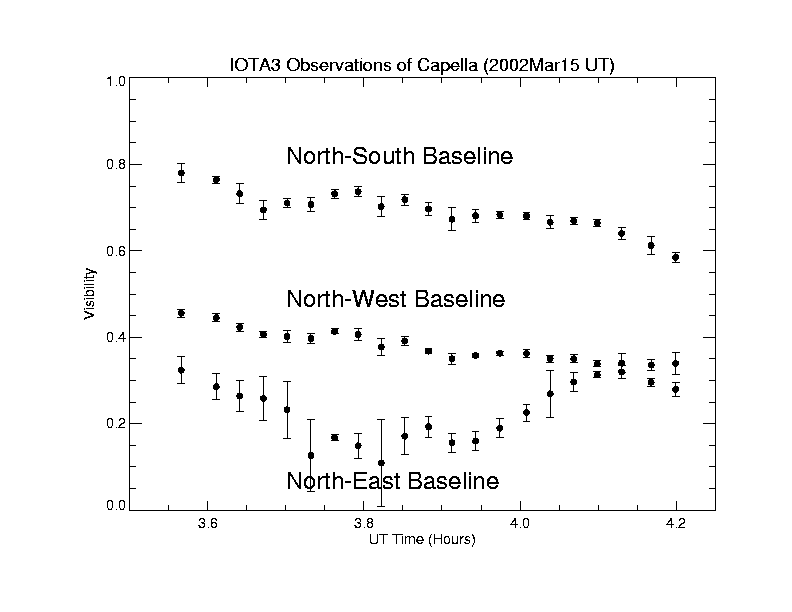
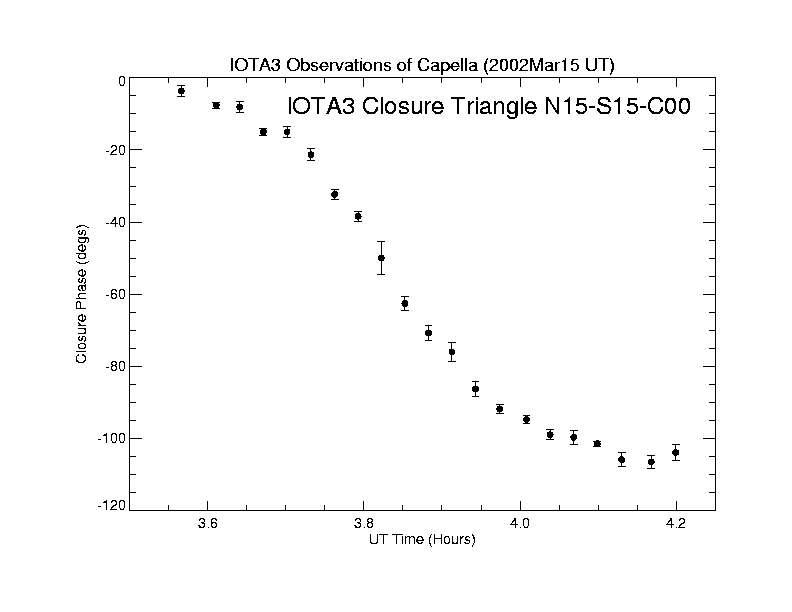
First Three-Telescope Starlight Fringes at the IOTA (February 2002)
First starlight fringes were observed on three simultaneous baselines
at the IOTA (Infrared Telescope Optical Array) on 23 February 01:30
a.m. local time. The IOTA is a long baseline interferometer operated
by the Smithsonian Astrophysical Observatory, a member of the
Harvard-Smithsonian Center for Astrophysics. This crucial milestone
culminates work undertaken over the last three years to install the
IOTA's third telescope and its beam-line, and also demonstrates our
new interferometer control system, new focal plane camera, and new
three-way beam combiner. Coherent combination of starlight from more
than two separated telescopes is a feat that has only been
accomplished at two other long-baseline interferometers worldwide
(COAST in the UK and NPOI in the US).
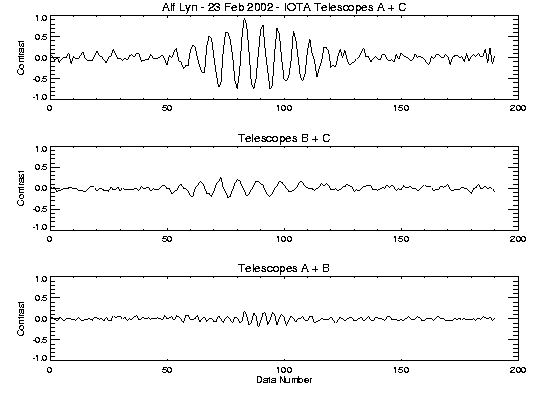
The plot above shows interference fringes obtained in H-band (1.65
microns) on the star Alf Lyn (HD80493, H-magnitude = -0.5). The
configuration of the array was that of a triangle with two
perpendicular baselines of length 15 meters (between telescopes [A,C]
and [B,C]) and a diagonal baseline oriented North-South of length 21
meters (between telescopes [A,B]). The panels show example raw
interferograms detected simultaneously on the three baselines (the
complementary outputs from our pair-wise combiner for each telescope
pair have been subtracted to reduce photometric fluctuations). No
attempt was made in these data to optimize the flux input. Also, no
attempt was made to balance the light contribution from each
telescope, or the polarization state at the combiner, both of which
impact the measured fringe contrast.
In this experiment, we used an integrated optics (IO) beam combiner
developed and integrated at the IOTA by our collaborators at the
Laboratoire d'Astrophysique de l'Observatoire de Grenoble (LAOG,
France). IO components implement optical functions such as beam
division and recombination in glass or glass plus silicon chips of
only a few millimeters in size, and therefore are regarded by many as
the solution to the problems of size and stability facing the next
generation of ground based and space interferometers containing a
large number of apertures. These observations are the first ever to
use an IO component to combine the light from more than two
telescopes. The technique was first demonstrated on the sky also at
the IOTA using a two-beam combiner in November 2000.
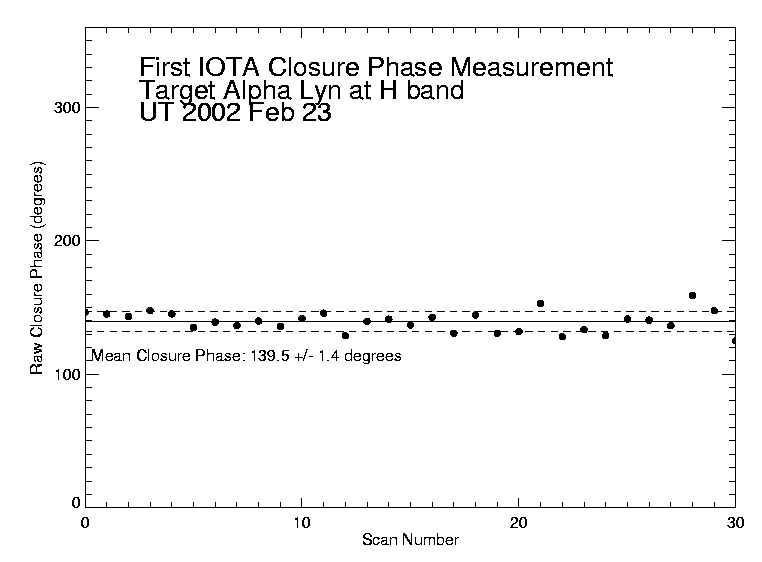
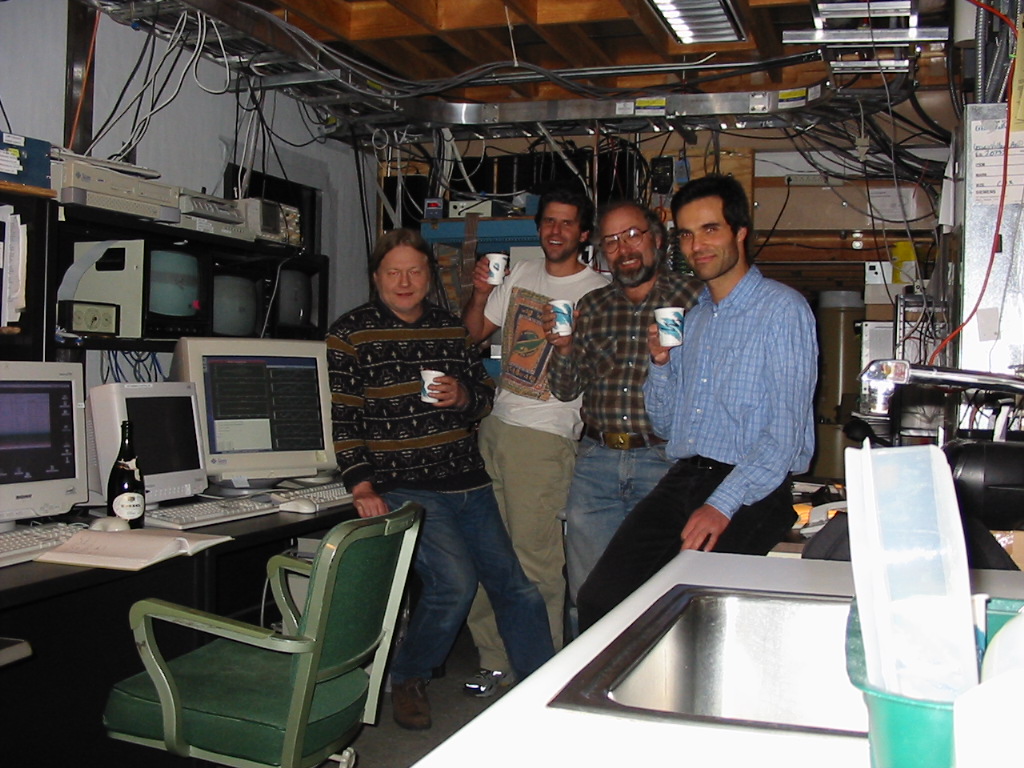
To learn more:
IOTA Home Page
Rafael Millan-Gabet
rmillan@cfa.harvard.edu
February 24 2002